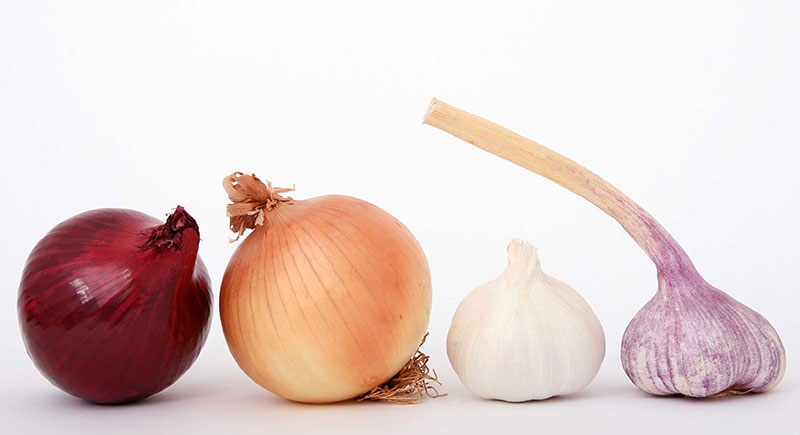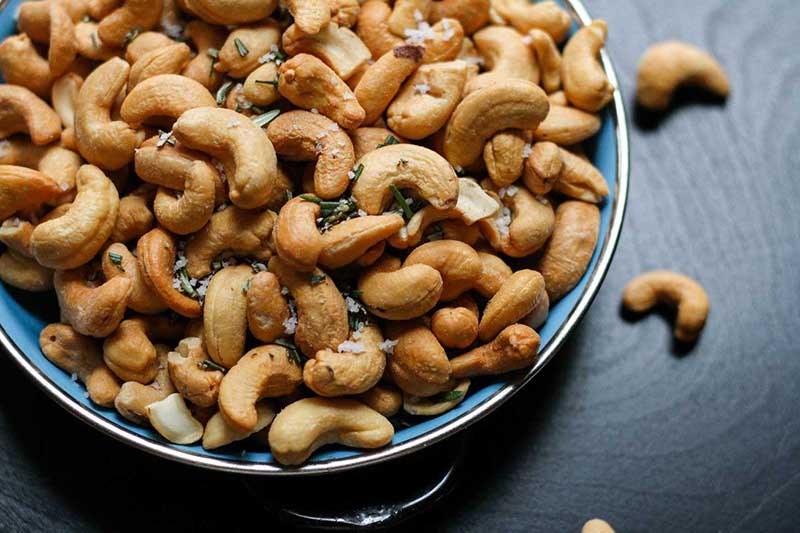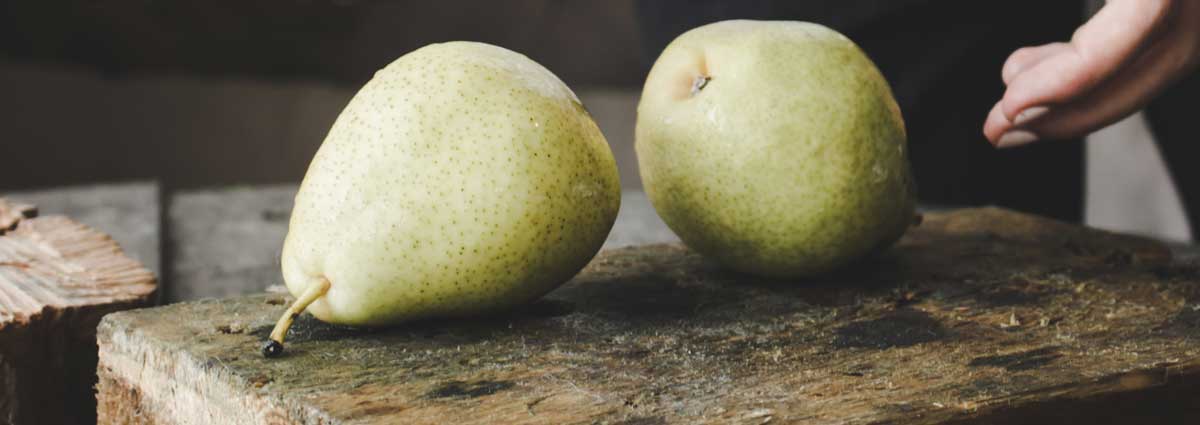FODMAPs are a group of small chain carbohydrates (sugars and fibers) found naturally in foods.
The name stands for:
F - Fermentable
O - Oligosaccharides
D - Disaccharides
M - Monosaccharides
A - And
P - Polyols
What do these names mean?
Fermentable means easily broken down by bacteria found in the gut. This process produces gases as biproducts.
Oligosaccharides are two categories of sugars: fructooligosaccharides (FOS or fructants) and galactooligosaccharides (GOS or galactans). Fructans are chains of fructose with a glucose unit attached at the end, while galactans are galactose chains with a fructose molecule attached at the end.
Disaccharides are molecules that consist of two sugar units joined together. In this case, the culprit disaccharide is lactose, a molecule made up of the two digestible sugars glucose and galactose.
Monosaccharides are single sugar units which require no digestion. These are glucose, fructose and galactose. In the case of FODMAPs, fructose poses a problem but only when present in excess of glucose, meaning in larger quantities than glucose when ingested. This is a problem because fructose absorption into the gut happens efficiently and effectively only when glucose exists in equal or bigger proportions. Glucose is absorbed across the intestinal wall efficiently and appears to carry fructose along with it. When there is excess fructose however, another absorption method is required to carry the extra fructose across. This pathway is often compromised in some individuals leading to the excess fructose being malabsorbed (not absorbed properly into the bloodstream).
Polyols are sugar alcohols, which is basically a sugar molecule with an alcohol group attached to it. These are: isomalt, maltitol, mannitol, polydextrose, sorbitol and xylitol.
What are some examples of foods containing FODMAPs?

| High in FRUCTANTS | High in GOS | High in LACTOSE | EXCESS FRUCTOSE | High in POLYOLS |
| Wheat | Pulses |
Whole, reduced fat or skimmed (cow, goat or sheep’s) milk |
Apples | Apples |
| Barley | Legumes | Evaporated milk | Cherries | Pears |
| Rye | Cashews | Sweetened, condensed milk | Figs | Apricots |
| Nectarines | Pistachios | Ice Cream | Mangoes | Peaches |
| Watermelon | Cow’s or goat’s yoghurt | Pears | Plums | |
| Garlic | Cream cheese | Dried fruit | Prunes | |
| Onion | Cottage cheese | Asparagus | Blackberries | |
| Cashews | Ricotta cheese | Artichokes | Watermelon | |
| Pistachios | Fresh Cream | Agave syrup | Cauliflower | |
| Chamomile tea | Honey |
Items with artificial sweeteners i.e. gums, mints, desserts etc. |
||
| Fennel tea | High-fructose corn syrup | |||
| Fruit juices |
What happens to FODMAPs when they are ingested?

These molecules enter the body when food is ingested but do not get absorbed into the bloodstream and instead build-up in the small intestine for a number of reasons. Upon consumption, fructants and galactants are undigested as humans lack the enzymes to break them down, so they remain in the intestine instead of being absorbed into the bloodstream. Lactose builds up in the intestine because many IBS or other GI sufferers do not have the enzyme (or enough enzymes) to break it down. Fructose is a molecule that is readily absorbed in the intestine; however, it needs to be accompanied by glucose. If fructose is ingested in excess of glucose, then malabsorption results and it builds up in the intestine. Lastly, the sugar alcohols—polyols—are absorbed by the body but partially and in a very slow manner. Thus, they tend to accumulate in the small intestine in large quantities.
What happens to FODMAPs when they are not absorbed?
FODMAP molecules are small and soluble and therefore osmotically active. That means that they draw water towards them. In this case, they draw water into the small intestine. This excess water along with the malabsorbed FODMAPs pass to the colon. There, the molecules are broken down (fermented) by bacteria (microbiota) living in the colon, a process that releases methane and hydrogen gas. The accumulation of gas along with the presence of excess water cause swelling and distension in the intestines. This leads to bloating, pain, diarrhea and/or constipation.
In addition, patients of functional gastrointestinal disorders (FGIDs), and in particular IBS, often suffer from visceral hypersensitivity, which is a heightened sensitivity to pain in the inner organs, in this case the gastrointestinal tract. It appears that the neurons in the gut are more sensitized and therefore over-reactive, sending amplified messages to the brain and resulting in a magnified sensation of pain. Therefore, the bloating, pain and urgency due to the accumulation of ill-absorbed FODMAPs in the gut is exaggerated due to visceral hypersensitivity, resulting in a feeling of more pain and discomfort.
What is the low FODMAP diet?
Research into FODMAP-containing foods has demonstrated that foods high in FODMAPs result in the above symptoms of bloating, gas, diarrhea, constipation and pain for many people with functional gastrointestinal disorders (FGIDs) and especially IBS. Since IBS alone affects one in five people worldwide, FODMAPs and a healthy active lifestyle play the most significant roles in reducing IBS suffering.
The low FODMAP diet is a proven plan that works to minimize IBS-related bloating and other symptoms. It was developed about 10 years ago by Monash University in Melbourne, Australia, where foods were analyzed and identified based on their FODMAP content. The diet, which should be overseen by a trained registered dietitian, involves a strict following of the low FODMAP diet for 2-6 weeks in order to improve symptoms and identify whether the diet works on the patient. This is followed by a re-introduction stage where FODMAP foods are re-introduced in a sequential manner and on a patient-by-patient basis according to each patient’s response.
References
https://www.monashfodmap.com/about-fodmap-and-ibs/
http://fodmapmonash.blogspot.com.cy/2017/06/eating-out-on-low-fodmap-diet.html#more
https://www.kcl.ac.uk/lsm/Schools/life-course-sciences/departments/nutritional-sciences/projects/fodmaps/index.aspx
https://www.nestlehealthscience.us/lowfodmap/fodmap-101
Shepherd S and Gibson P. The Complete Low FODMAP Diet. Australia: Penguin, 2011. Print
Farmer AD and Oasim A. Gut pain and visceral hypersensitivity. (2013) Br J Pain 7(1): 39-47. (https://www.ncbi.nlm.nih.gov/pmc/articles/PMC4590155/)
Disclaimer: Do not self-diagnose. Bloating and other IBS symptoms may resemble symptoms of more serious conditions such as cancer (colon, ovarian or uterine), kidney failure, congestive heart failure or liver disease, which produces fluid that drains and collects in the abdomen. It can also signal damage of the GI tract or pancreatic insufficiency. Always seek the help and guidance of a healthcare professional.



